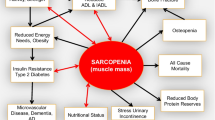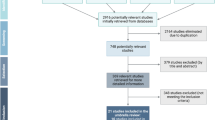Abstract
Surfactant protein D (SP-D) belongs to the collectin family and has pro-and anti-inflammatory capacities depending on its oligomerization. Previously, circulating SP-D was shown to be decreased in early rheumatoid arthritis (RA) and negatively correlated to disease activity. This study aimed at assessing the diurnal rhythmicity and the influence of physical activity on circulating SP-D in patients with RA at different stages compared with healthy individuals. Patients with early RA (ERA) with disease duration <6 months and with long-standing RA (LRA) with disease duration 5–15 years were included in two sub-studies. Healthy individuals served as controls. Diurnal variation: blood samples were collected every 3 h from 7 a.m to 10 p.m and the following morning. Physical activity: blood sampling was done before and after standardized physical challenge. SP-D was measured by ELISA. SP-D exhibited diurnal variation in healthy controls (n = 15) and in patients with ERA (n = 9) and LRA (n = 9) with peak values at 10 a.m. and nadir in the evening (controls: P < 0.001, ERA: P = 0.004 and LRA: P = 0.009). Three hours after cessation of physical activity, SP-D decreased below pre-exercise levels in both ERA (n = 10), LRA (n = 10) and controls (n = 13) (ERA: P < 0.001, LRA: P < 0.001 and controls: P = 0.005). In patients with RA, the decline was already observed 1 h post-exercise. Circulating SP-D exhibits diurnal variation both in patients with RA at different stages and in healthy controls. SP-D in serum decreases following physical activity in health and RA disease. This study underscores the need of standardized blood sampling conditions in future studies on SP-D.


Similar content being viewed by others
References
Holmskov U (2000) Collectins and collectin receptors in innate immunity. APMIS Suppl 100:1–59
Leth-Larsen R, Garred P, Jensenius H et al (2005) A common polymorphism in the SFTPD gene influences assembly, function, and concentration of surfactant protein D. J Immunol 174:1532–1538
Hartshorn KL, White MR, Tecle T et al (2007) Reduced influenza viral neutralizing activity of natural human trimers of surfactant protein D. Respir Res 8:9
Hartshorn KL, Crouch E, White MR et al (1998) Pulmonary surfactant proteins A and D enhance neutrophil uptake of bacteria. Am J Physiol Lung Cell Mol Physiol 274:L958–L969
Bufler P, Schmidt B, Schikor D et al (2003) Surfactant protein A and D differently regulate the immune response to nonmucoid Pseudomonas aeruginosa and its lipopolysaccharide. Am J Respir Cell Mol Biol 28:249–256
Stahlman MT, Gray ME, Hull WM et al (2002) Immunolocalization of surfactant protein-D (SP-D) in human fetal, newborn, and adult tissues. J Histochem Cytochem 50:651–660
Crouch E, Parghi D, Kuan SF et al (1992) Surfactant protein D: subcellular localization in nonciliated bronchiolar epithelial cells. Am J Physiol 263:L60–L66
Voorhout WF, Veenendaal T, Kuroki Y et al (1992) Immunocytochemical localization of surfactant protein D (SP-D) in type II cells, Clara cells, and alveolar macrophages of rat lung. J Histochem Cytochem 40:1589–1597
Leth-Larsen R, Nordenbaek C, Tornoe I et al (2003) Surfactant protein D (SP-D) serum levels in patients with community-acquired pneumonia. Clin Immunol 108:29–37
Nagae H, Takahashi H, Kuroki Y et al (1997) Enzyme-linked immunosorbent assay using F(ab’)2 fragment for the detection of human pulmonary surfactant protein D in sera. Clin Chim Acta 266:157–171
Sorensen GL, Madsen J, Kejling K et al (2006) Surfactant protein D is proatherogenic in mice. Am J Physiol Heart Circ Physiol 290:H2286–H2294
Woodsworth BA, Lathers D, Neal JG et al (2006) Immunolocalization of surfactant protein A and D in sinonasal mucosa. Am J Rhinol 20:461–465
Oberley RE, Goss KL, Dahmoush L et al (2005) A role for surfactant protein D in innate immunity of the human prostate. Prostate 65:241–251
Ni M, Evans DJ, Hawgood S et al (2005) Surfactant protein D is present in human tear fluid and the cornea and inhibits epithelial cell invasion by Pseudomonas aeruginosa. Infect Immun 73:2147–2156
Leth-Larsen R, Floridon C, Nielsen O et al (2004) Surfactant protein D in the female genital tract. Mol Hum Reprod 10:149–154
Madsen J, Kliem A, Tornoe I et al (2000) Localization of lung surfactant protein D on mucosal surfaces in human tissues. J Immunol 164:5866–5870
Hermans CEDR, Bernard ALFR (1999) Lung epithelium-specific proteins. Characteristics and potential applications as markers. Am J Respir Crit Care Med 159:646–678
Christensen AF, Holmskov U, Sorensen GL et al (2008) Surfactant protein D is decreased in rheumatoid arthritis. Arthritis Rheum 58:S708
Hoegh SV, Lindegaard HM, Sorensen GL et al (2008) Circulating surfactant protein D is decreased in early rheumatoid arthritis: A 1-year prospective study. Scand J Immunol 67:71–76
Arnett FC, Edworthy SM, Bloch DA et al (1988) The American Rheumatism Association 1987 revised criteria for the classification of rheumatoid arthritis. Arthritis Rheum 31:315–324
Thorsen H, Hansen TM, Mckenna SP et al (2001) Adaption into Danish of the stanford health assessment questionnaire (HAQ) and the rheumatoid arthritis quality of life scale (RaQol). Scand J Rheumatol 30:103–109
van Riel PL, Scott DL (2004) Eular handbook of clinical assessments in rheumatoid arthritis, 3 edn. Van Zuiden Communications B.V., CC Alphen aan den Rijn, The Netherlands
Larsen A, Dale K, Eek M (1977) Radiographic evaluation of rheumatoid arthritis and related conditions by standard reference films. Acta Radiol Diagn Stockh 18:481–491
Høier-Madsen M, Nielsen LP, Møller S (1986) Determination of IgM rheumatoid factors by enzyme-linked immunosorbent assay (ELISA). Ugeskr Laeger 148:2018–2021
Hoegh SV, Sorensen GL, Tornoe I et al (2009) Long-term stability and circadian variation in circulating levels of surfactant protein D. Immunobiology (Epub ahead of print)
Sorensen GL, Husby S, Holmskov U (2007) Surfactant protein A and surfactant protein D variation in pulmonary disease. Immunobiology 212:381–416
Haczku A, Cao Y, Vass G et al (2006) IL-4 and IL-13 form a negative feedback circuit with surfactant protein-D in the allergic airway response. J Immunol 176:3557–3565
Ikegami M, Whitsett JA, Chroneos ZC et al (2000) IL-4 increases surfactant and regulates metabolism in vivo. Am J Physiol Lung Cell Mol Physiol 278:L75–L80
Snyder GD, Oberley-Deegan RE, Goss KL et al (2008) Surfactant protein D is expressed and modulates inflammatory responses in human coronary artery smooth muscle cells. Am J Physiol Heart Circ Physiol 91529
Dulkerian SJ, Gonzales LW, Ning Y et al (1996) Regulation of surfactant proetin D in human fetal lung. Am J Respir Cell Mol Biol 15:781–786
Wang JY, Yeh TF, Lin YC et al (1996) Measurement of pulmonary status and surfactant protein levels during dexamethasone treatment of neonatal respiratory distress syndrome. Thorax 51:907–913
Fernandez-Real JM, Valdes S, Manco M et al (2010) Surfactant protein D, a marker of lung innate immunity, is positively associated with insulin resistance. Diabetes Care. doi:dc09-0542/DC1 (E-pub ahead of print)
Cutolo M, Straub RH (2008) Circadian rhythms in arthritis: hormonal effects on the immune/inflammatory reaction. Autoimmun Rev 7:223–228
Petrovsky N, McNair P, Harrison LC (1998) Diurnal rhythms of pro-inflammatory cytokines: regulation by plasma cortisol and therapeutic implications. Cytokine 10:307–312
Cutolo M, Maestroni GJ, Otsa K et al (2005) Circadian melatonin and cortisol levels in rheumatoid arthritis patients in winter time: a north and south Europe comparison. Ann Rheum Dis 64:212–216
Maestroni GJ, Sulli A, Pizzorni C et al (2002) Melatonin in rheumatoid arthritis: synovial macrophages show melatonin receptors. Ann N Y Acad Sci 966:271–275
Zoli A, Lizzio MM, Ferlisi EM et al (2002) ACTH, cortisol and prolactin in active rheumatoid arthritis. Clin Rheumatol 21:289–293
Straub RH, Cutolo M (2007) Circadian rhythms in rheumatoid arthritis. Implications for pathophysiology and therapeutic management. Arthritis Rheum 56:399–408
Pedersen BK, Hoffman-Goetz L (2000) Exercise and the immune system: regulation, integration and adaptation. Physiol Rev 80:1055–1081
Hill EE, Zack E, Battaglini C et al (2008) Exercise and circulating cortisol level: the intensity threshold effect. J Endocrinol Invest 31:587–591
Chikanza IC, Petrou P, Kingsley G et al (1992) Defective hypothalamic response to immune and inflammatory stimuli in patients with rheumatoid arthritis. Arthritis Rheum 35:1281–1288
Eijsbouts AM, van den Hoogen FH, Laan RF et al (2005) Hypothalamic-pituitary-adrenal axis activity in patients with rheumatoid arthritis. Clin Exp Rheumatol 23:658–664
Pool AJ, Whipp BJ, Skasick AJ et al (2004) Serum cortisol reduction and abnormal prolactin and CD4 +/CD8 + T-cell response as a result of controlled exercise in patients with rheumatoid arthritis and systemic lupus erythematosus despite unaltered muscle energetics. Rheumatology 43:43–48
Acknowledgments
This study was supported by the Danish Rheumatism Association and the A. P Møller Foundation for the Advancement of Medical Science.
Author information
Authors and Affiliations
Corresponding author
Rights and permissions
About this article
Cite this article
Christensen, A.F., Hoegh, S.V., Lottenburger, T. et al. Circadian rhythm and the influence of physical activity on circulating surfactant protein D in early and long-standing rheumatoid arthritis. Rheumatol Int 31, 1617–1623 (2011). https://doi.org/10.1007/s00296-010-1538-7
Received:
Accepted:
Published:
Issue Date:
DOI: https://doi.org/10.1007/s00296-010-1538-7




